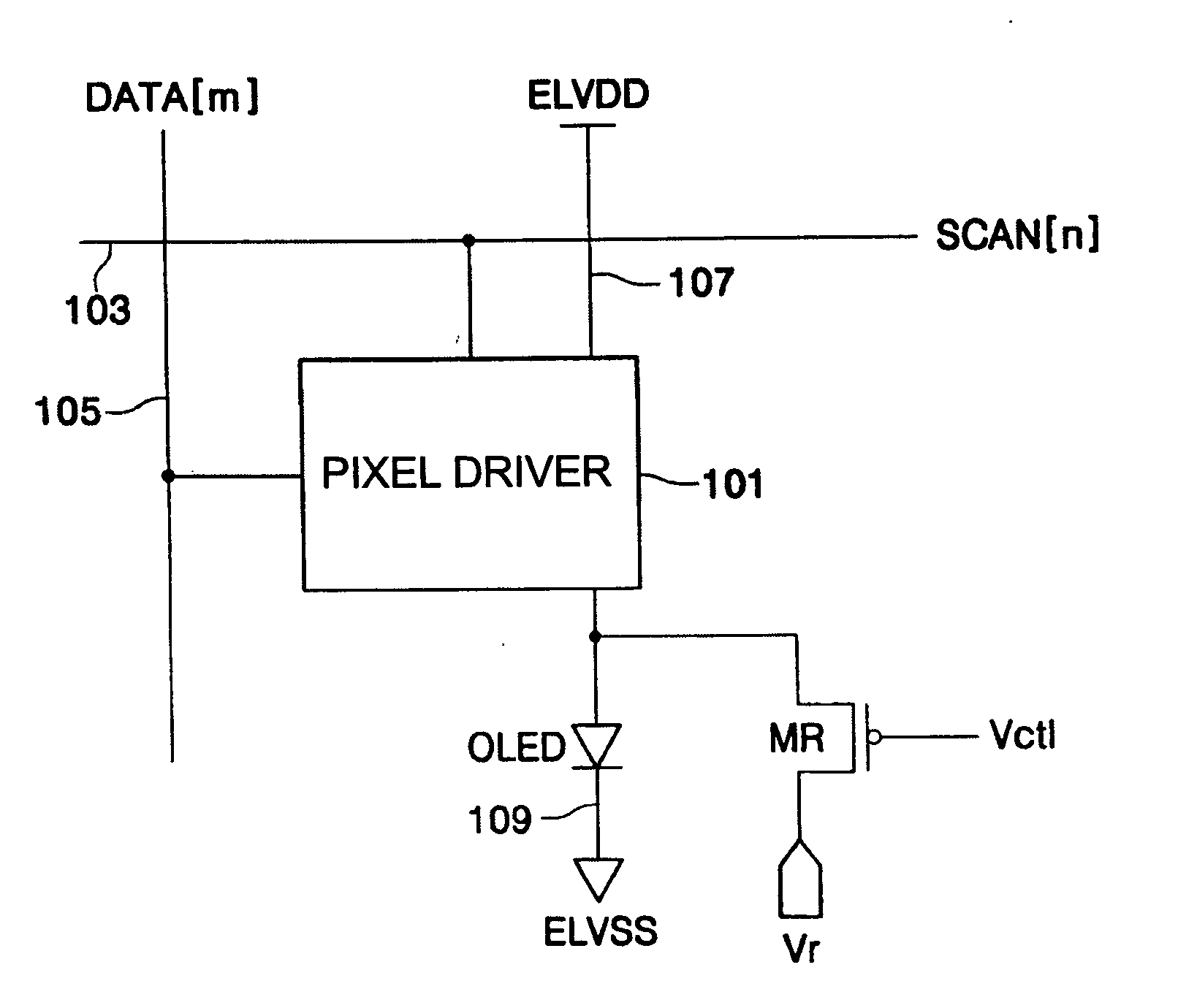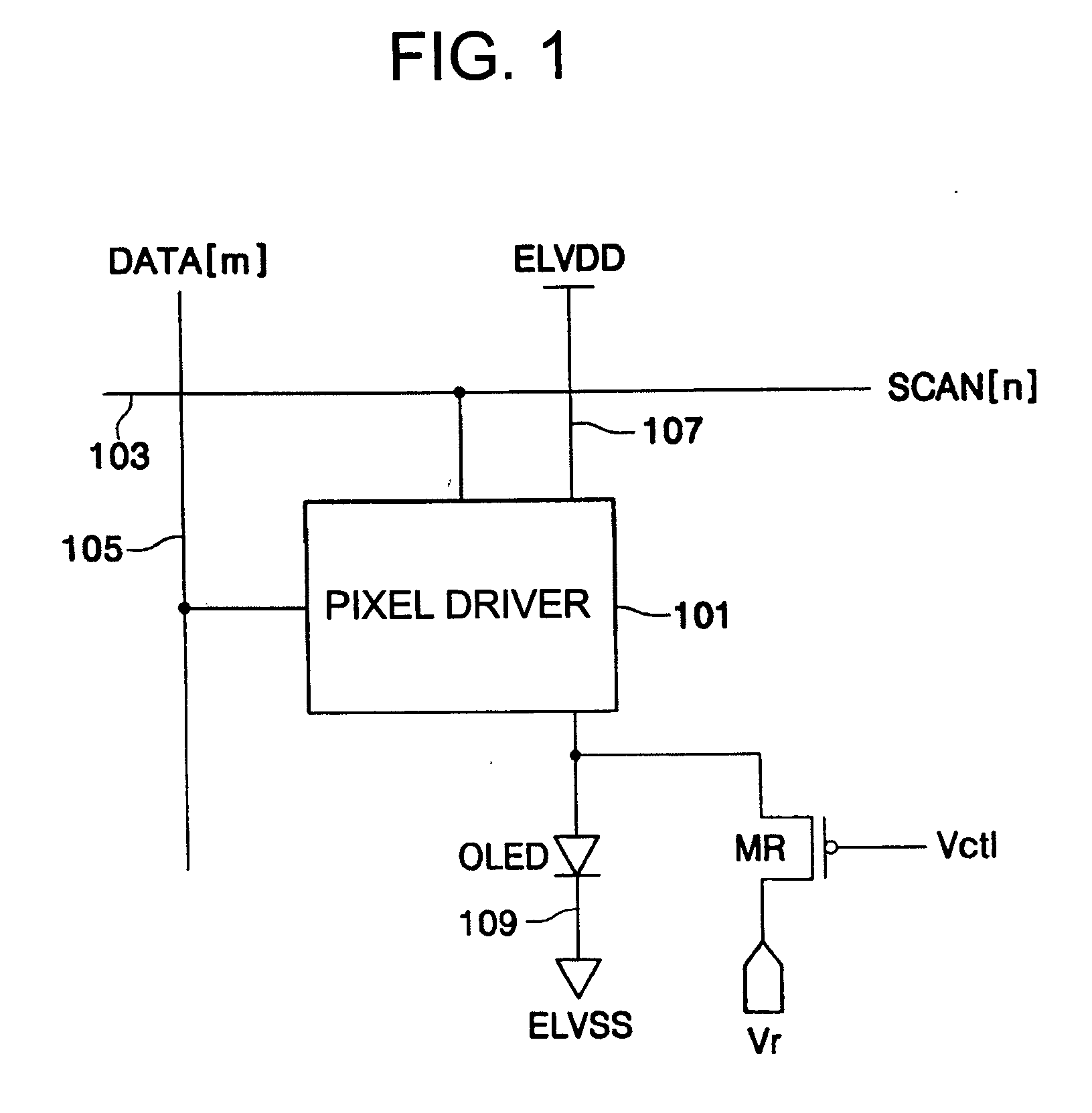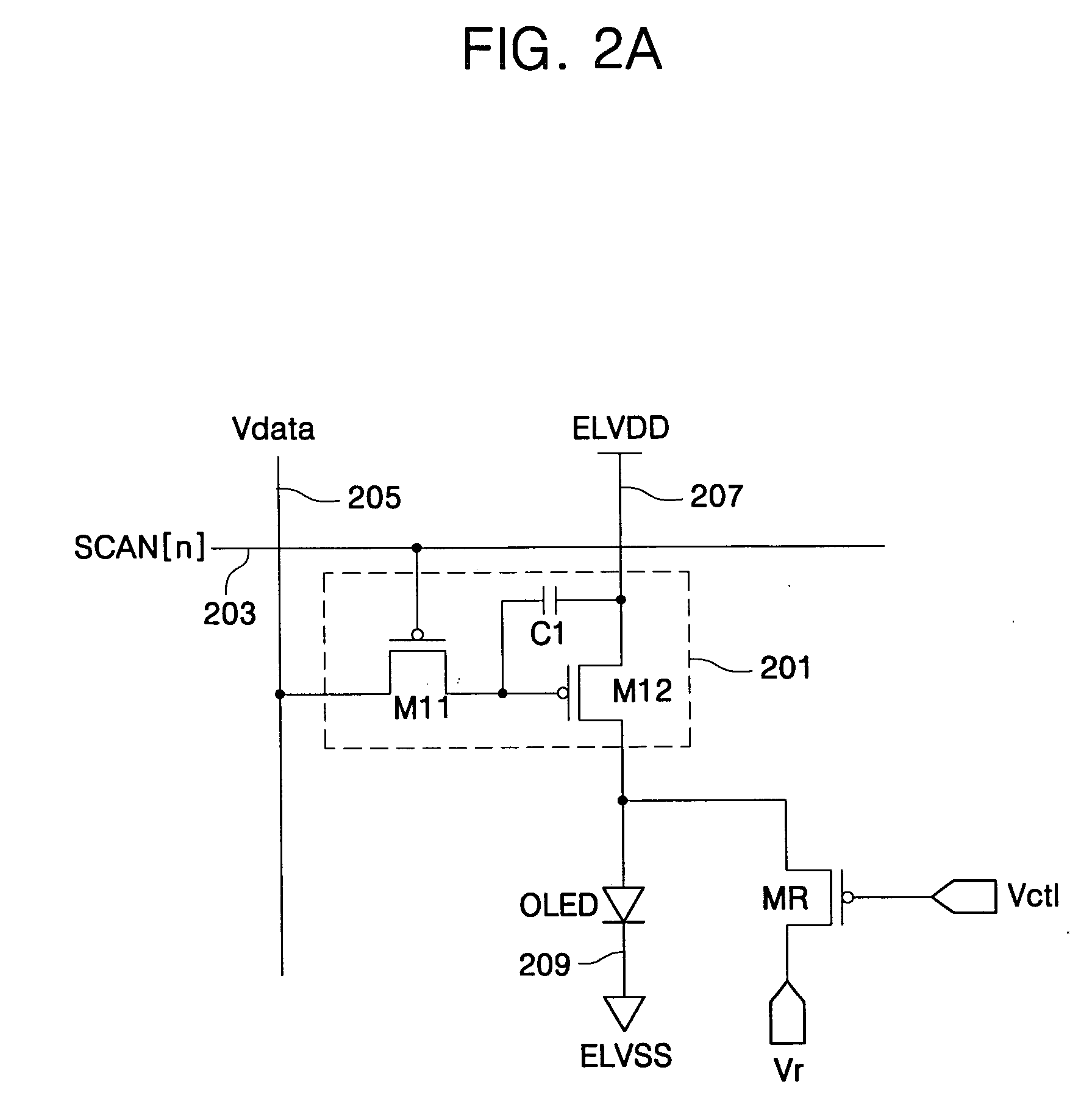Organic electroluminescent display
a technology of organic electroluminescent display and organic electroluminescent display, which is applied in the direction of electric variable regulation, process and machine control, instruments, etc., can solve the problems of non-uniform brightness of active matrix organic electroluminescent display, inability to check for progressive defects in organic electroluminescent display
- Summary
- Abstract
- Description
- Claims
- Application Information
AI Technical Summary
Problems solved by technology
Method used
Image
Examples
first embodiment
[0032]FIG. 1 is a block diagram of an organic electroluminescent display according to the present invention.
[0033] Referring to FIG. 1, the organic electroluminescent display according to the first embodiment of the present invention includes a pixel driving part 101, an OLED, and a reverse bias transistor MR.
[0034] The pixel driving part 101 includes a plurality of transistors and a capacitor. Furthermore, the pixel driving part 101 is formed in a region where a scan line 103 intersects a data line 105. When a scan signal SCAN[n] is supplied from the scan line 103, the pixel driving part 101 is selected and a data signal DATA[m] is supplied to the selected pixel driving part 101. The data signal DATA[m] is supplied to the pixel driving part 101 through the data line 105. The data signal DATA[m] supplied to the pixel driving part 101 is stored as a voltage in the capacitor provided in the pixel driving part 101. Alternatively, the data signal DATA[m] can be supplied as a current to...
second embodiment
[0061]FIG. 3 is a block diagram of an organic electroluminescent display according to the present invention.
[0062] Referring to FIG. 3, the organic electroluminescent display according to the second embodiment of the present invention includes a pixel driving part 301, an OLED, and a reverse bias transistor MR.
[0063] The pixel driving part 301 includes a plurality of transistors and a capacitor. Furthermore, the pixel driving part 301 is formed in a region where a scan line 303 intersects a data line 305. When a scan signal SCAN[n] is supplied from the scan line 303, the pixel driving part 301 is selected and a data signal DATA[m] is supplied to the selected pixel driving part 301. The data signal DATA[m] is supplied to the pixel driving part 301 through the data line 305. The data signal DATA[m] supplied to the pixel driving part 301 is stored as a voltage in the capacitor provided in the pixel driving part 301. Alternatively, the data signal DATA[m] can be supplied as a current t...
third embodiment
[0080]FIG. 5 is a block diagram of an organic electroluminescent display according to the present invention.
[0081] Referring to FIG. 5, the organic electroluminescent display according to the third embodiment of the present invention includes a pixel driving part 501, an OLED, a first reverse bias transistor MR1, and a second reverse bias transistor MR2.
[0082] The pixel driving part 501 is selected by a scan signal SCAN[n] supplied through a scan line 503, and receives a data signal DATA[m] through a data line 505. The data signal DATA[m] is either a data voltage or a data current. Furthermore, the pixel driving part 501 is connected to a first power line 507 and supplies a positive source voltage ELVDD from the first power line 507 to the OLED, thereby making the OLED emit light.
[0083] The OLED is connected between the pixel driving part 501 and a second power line 509. That is, the OLED has an anode connected to the pixel driving part 501, and a cathode electrode connected to th...
PUM
 Login to View More
Login to View More Abstract
Description
Claims
Application Information
 Login to View More
Login to View More - R&D
- Intellectual Property
- Life Sciences
- Materials
- Tech Scout
- Unparalleled Data Quality
- Higher Quality Content
- 60% Fewer Hallucinations
Browse by: Latest US Patents, China's latest patents, Technical Efficacy Thesaurus, Application Domain, Technology Topic, Popular Technical Reports.
© 2025 PatSnap. All rights reserved.Legal|Privacy policy|Modern Slavery Act Transparency Statement|Sitemap|About US| Contact US: help@patsnap.com



